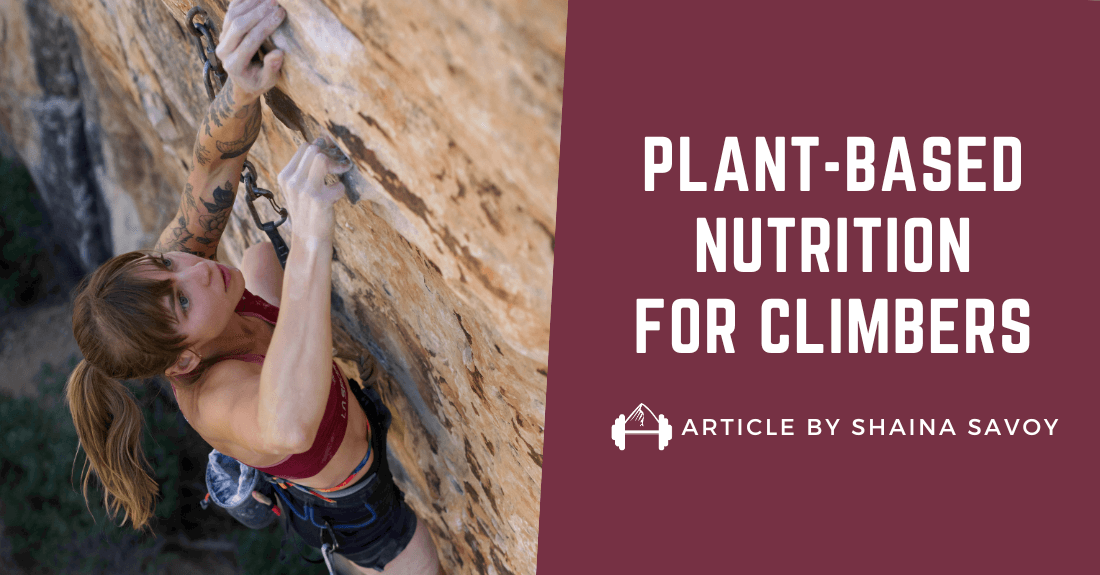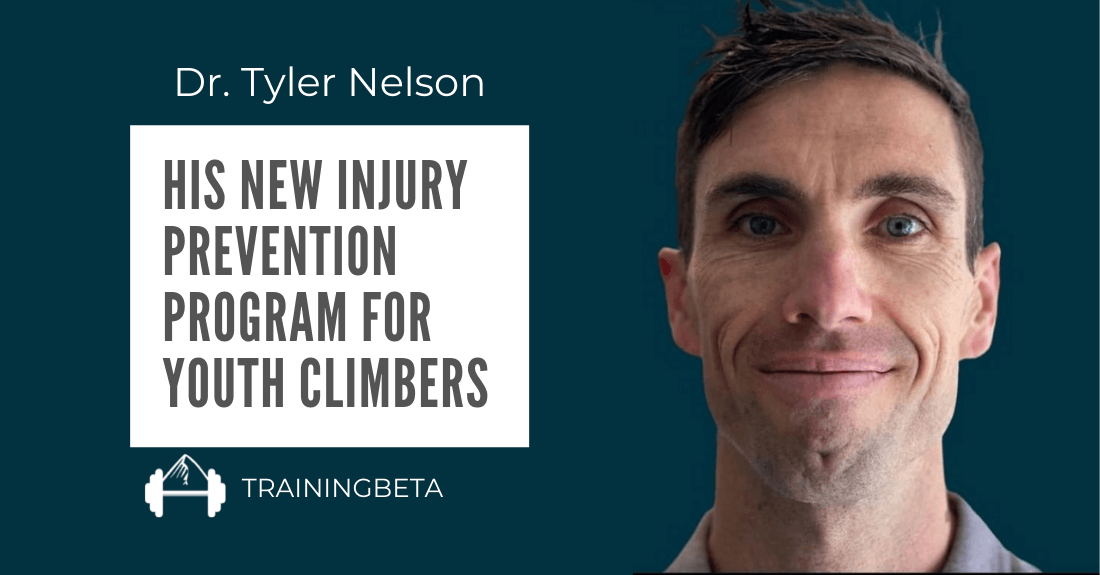How One Climber Healed His Climber’s Elbow
I have been climbing for a couple of years. After a short period of sporadic climbing, I fell completely in love with the sport. The stoke was high, and 1.5 years in I upped my cadence considerably. One session after completing an overhanging move, I felt a stinging pain in both elbows. My climbing partner informed me that climber’s elbow is a common condition, and I decided to google it when I got home.
In the following months, the pain grew with no sign of stopping. It was located above my elbow on the inside of the arm, between my biceps and triceps near the bone.


What follows is my story of how I overcame the injury and got back to climbing at my best – pain-free. It is important to stress that I am not a medical professional and that the below might not work for you. This is simply my personal story about overcoming a common issue for climbers.
At first, I tried to accommodate the injury by resting longer between sessions and climbing less physically taxing boulders. These remedies helped while I was doing them, but did nothing to ease the condition more permanently. I grew increasingly desperate. Fixing the pain in my elbows became my main goal, and I started doing a series of rehab exercises: wrist curls, reverse wrist curls, forearm pronation, and supination, Tyler curls, and reverse Tyler curls. None of these fixed the pain, though I think it was useful to strengthen the smaller muscles prone to injury, and their antagonists.
The pain did not go away.
Some weeks I would tone down the climbing, and my elbow would go back to feeling fine. But half an hour into my first session it would flare up again.
Finally, I decided to see a physiotherapist. He prescribed me 3 weeks of complete rest from training. With the words of a professional tempering my stoke, I managed to take 3 entire weeks off. Coincidentally, when I returned, I had the last session before COVID lockdowns closed the gym for almost 4 months. The session was quite good with only limited pain. I hoped it might last.
During COVID lockdown, however, the pain would flare up again after a session of pullups or other exercises. I was painfully aware that the rest period had not fixed the issue. Meanwhile, I continued rehabbing, massaging, and stretching to no avail.
When spring rolled around, I jumped at the first opportunity to climb again. Immediately my elbows flared up. I didn’t know what to do.
My Friend’s Story
That’s when a friend reminded me of his story with chronic pain. He had been studying to become an engineer when finger pain derailed him. The pain had gotten so severe that he could not use a computer, and was considering readjusting his life, as he assumed he would not be able to hold a job where typing was required. He, too, did a ton of rehab without getting better. But today he is pain-free.
I was fascinated by the story.
Essentially, he told me, the key was to recognize one core tenet: There can be damage without pain. And there can be pain without damage.
In his case – and mine as it would turn out – the damage of our initial injuries had been healed through rest and rehab. The pain that remained was a residue of oversensitive nerves, afraid that we would hurt our bodies again. In truth, there was no injury – and no amount of rest or rehab could fix what was not broken.
In recent years modern pain science has shone a light on our outdated views on pain. It is a common misconception that pain is always associated with damage. Sometimes the pain persists and becomes the issue that needs fixing. In short, our focus had been wrong. Our injuries having healed, what we needed to focus on was the nerves themselves.
Progressive Overload for Pain
So, what is the takeaway from all this?
Essentially this: Focus on fixing whatever injury you have first. Rest and rehab. But if the pain persists after several months, you are likely dealing with chronic pain. And the step to fixing that is essentially the exact opposite of what we need to do to cure the injury in the first place. Instead of avoiding pain, we need to lean into it. Progressively.
We do this using the same principles as we would when weightlifting. Start easy and slowly increase the intensity as the body gets used to the current workload. This process is known as progressive overload and underlies many adaptations the body undergoes.
In the beginning, even simple movements might cause pain. What is needed to return to normal is to slowly push the boundary of what you can do without feeling pain, by consistently – week by week – applying more and more pressure to the previously injured area until all the movements that were pain-free before are so again.
My Program for Fixing Climber’s Elbow
Concretely I advise finding 1 or 2 exercises that you can do in a controlled manner that trigger the pain. Finding the correct exercise might take a little experimentation, or you might know it all too well.
For me the exercise was holding out my hand palm up and pressing down on it with my other palm, elbows bent at 90 degrees. Upon release, this elicited a sharp pain in the elbow of the pressing arm.
Watch the video below for a demonstration of that exercise.
Depending on how hard and long I pressed, I could elicit different levels of pain. And this is exactly what is needed to engage in progressive overload. If you find an exercise you can load with weight – all the better.
My recommendation is that you do the exercise for 3-5 sets of 10 seconds, 3 times a week at an intensity of about 3-4/10 in pain. When you stop the exercise, the pain should subside rapidly – preferably within 10 seconds. If it goes on for much longer, you might be pushing too hard and need to reduce the intensity. You can do this on any day of the week, but I would recommend waiting at least 4-6 hours after climbing and pushing it to a rest day if your elbow still feels irritated from a climbing session.
The point of progressively overloading a simple exercise such as the palm pressing exercise I described is twofold. First, it lets you isolate the exact movement that causes pain. Second, it is easier to consistently, and incrementally, overload than is the case for climbing.
When you go climbing the recommended pain level is the same. Stay at or below 3-4/10 on the pain scale, and don’t let the pain go on for much longer than 10 seconds after you are off the wall. If the pain gets too high or persists for too long, you need to dial back or call it a day.
One way I found helpful in controlling the degree of pain, was climbing easier problems or slab climbs which use the elbows less. Dynos or steep overhanging climbs on the other hand was especially aggravating.
An example of the program…

Following this program, you will hopefully start noticing that movements that were a 4/10 before suddenly are less painful. Then it is time to increase the intensity – to progressively overload. Continue doing this for a while, and soon you will reach a point where all (reasonable) movements are pain-free.
For me, the pain subsided by itself, even before I got to do my targeted exercise very many times, simply because I started to climb without worrying so long as I stayed at a 3-4/10 or lower.
This quickly moved my pain threshold, and today my elbows feel better than I had dared hope for a year ago.
Today, I am climbing as much as I want without pain, and no longer feel limited by what my elbows can do. It is an incredibly liberating feeling after struggling with elbow pain for long enough that I started to worry if I would ever get rid of it. I hope you might experience something similar!
Disclaimer
I am not a doctor or a physical therapist. The above is simply my story. As I have outlined, I believe it is important to fix any underlying damage before engaging in the practice of progressive pain overload. If you are in doubt about what you are doing, or if you suspect the damage may not be healed, consult a doctor or a physical therapist before proceeding.
Further Resources
Below are a number of resources I have found useful in studying and fixing my elbow pain, as well as some exercises other people have found useful in rehab.
Rehab
Tyler Twist – https://www.youtube.com/watch?v=gsKGbqA9aNo (though maybe go a bit slower than the woman in the video)
Reverse Tyler Twist – https://www.youtube.com/watch?v=LtR8fYEUnXI
Wrist Curl – https://www.youtube.com/watch?v=7ac_qmBjkFI
Reverse Wrist Curl – https://www.youtube.com/watch?v=osYPwlBiCRM
Forearm pronation and supination with a hammer – https://www.youtube.com/watch?v=-LfyhlA9UNM
Tom Randall’s stretch – https://tomrandallclimbing.wordpress.com/2012/11/23/golfers-elbow-a-possible-solution/
Pain Science
Hooper’s Beta: Why your FINGER INJURY WON’T HEAL and HOW TO FIX IT (Hint: Pain is good) – https://www.hoopersbeta.com/library/pain-science-and-climbing-rehab
Modern Pain Science from University of South Australia – https://giving.unisa.edu.au/news/rethinking-pain2/
About the Author
 Victor Brøcker is a climber, writer, and freelancer, who sometimes contributes to TrainingBeta. He is from Denmark, Europe, but plans to travel the world climbing the most classic boulders and beautiful lines on every continent. You can find Victor on Instagram @victorbroecker
Victor Brøcker is a climber, writer, and freelancer, who sometimes contributes to TrainingBeta. He is from Denmark, Europe, but plans to travel the world climbing the most classic boulders and beautiful lines on every continent. You can find Victor on Instagram @victorbroecker




Hey, how many weeks of this exercise did it take for you to climb pain free? I had the exact same shooting pain happen in one arm a while ago and hasn’t been the same even with physiotherapy.